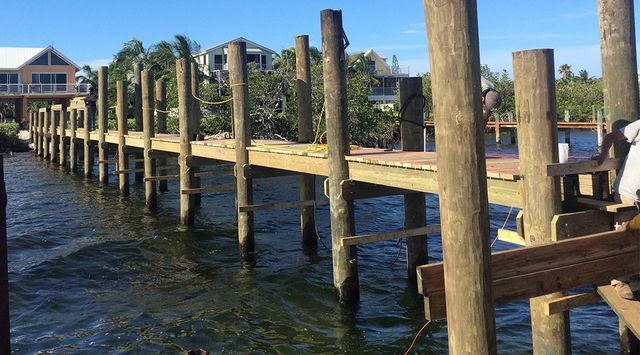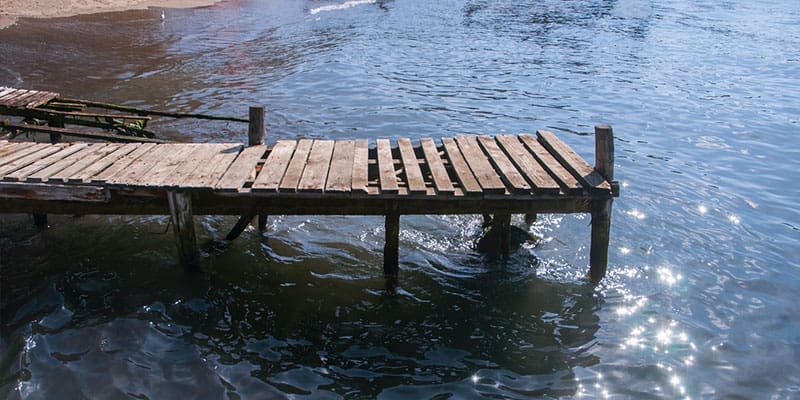Exactly How to Address Common Dock Repair Service Issues for Safe Water Activities

Identifying Common Dock Issues
Recognizing common dock problems is critical for keeping the performance and safety of your waterfront property. Normal examinations can assist discover issues before they become serious, guaranteeing both the longevity of the dock and the safety and security of those who use it. One prevalent problem is corroded or loosened fasteners. Over time, screws, bolts, and other fasteners can come to be loose due to continuous direct exposure to water and weather elements, leading to structural instability.
One more common issue is the deterioration of flotation protection gadgets. These devices are essential for maintaining the dock resilient, and any kind of damage or slits can cause the dock to listing or sink. On a regular basis checking for leakages or water logged drifts can preempt extra significant problems.
In addition, algae and barnacle accumulation on the dock's surface area can create slippery and harmful problems. This biofouling not just poses a risk to users however can likewise increase the deterioration of the dock products.
Last but not least, examining for indicators of rust on metal elements is essential. Corrosion can endanger the honesty of the dock's framework, making it dangerous. By routinely determining these typical dock concerns, you can make sure that your dock continues to be practical and secure for years to find.
Repairing Rotting Timber
When dealing with the problem of decaying wood on your dock, it is important to act quickly to stop more wear and tear. Begin by extensively evaluating the whole framework to determine all influenced locations. Utilize a screwdriver to penetrate the wood; if it sinks in quickly, the wood is likely rotted and needs instant interest.
Be sure to cut back to healthy, strong wood, guaranteeing you remove all compromised product. After elimination, deal with the staying wood with a timber preservative to avoid future rot.
Next, replace the gotten rid of sections with marine-grade lumber or pressure-treated wood, which are a lot more resistant to water damages. Safeguard the brand-new pieces with stainless-steel or galvanized bolts to stop rust. Additionally, applying a water-proof sealant to the new timber can give an extra layer of defense.
Safeguarding Loose Boards
Just how do you guarantee your dock continues to be functional and risk-free for all its users? One crucial facet is securing loosened boards, which can otherwise posture significant dangers. Loosened boards not just enhance the threat of tripping yet can also jeopardize the architectural honesty of the whole like this dock.

For reinstallation, use galvanized or stainless steel screws, as these products use premium resistance to corrosion in aquatic settings. Guarantee the screws are long enough to pass through deep into the underlying assistance framework, but not so lengthy that they extend through the dock's surface. Pre-drilling pilot holes can help protect against the timber from splitting.
Last but not least, preserve a normal assessment routine to recognize and address any kind of new concerns without delay. By safeguarding loose boards effectively, you add to the overall security and longevity of your dock, making it a trustworthy platform for water tasks.
Supporting Unsteady Pilings
Ensuring the stability of unstable pilings is vital to preserving a safe and practical dock. Unsteady pilings can endanger the whole structure, posing significant dangers to customers and potentially causing expensive repair work. The primary step in supporting these important components is a complete inspection. Take a look at the pilings for signs of rot, damages, or shifting. Utilize a degree to look for upright placement and ensure they are driven deep enough into the substratum to supply ample support.
If the pilings are discovered to be unstable, one effective method for reinforcement is using added supporting. Cross-bracing with treated lumber or galvanized steel can substantially boost stability. Anchor the braces firmly to both the pilings and the dock frame to distribute tons uniformly.

Regular upkeep and routine reassessment of the pilings' security are critical to guaranteeing lasting dock security and functionality.
Changing Rusty Equipment
Dealing with unsteady pilings is simply one aspect of keeping a dock's stability; another crucial problem is changing rusty hardware. Gradually, exposure to dampness and salt can lead to the oxidation and deterioration of screws, braces, and screws, jeopardizing the whole structure's safety and security. Normal assessment for rust is necessary, particularly after extreme weather or seasonal adjustments.
When rusty equipment is recognized, my link prompt action is needed. Begin by picking marine-grade stainless steel or galvanized equipment, both developed to resist the harsh aquatic setting. Make certain that you have the proper devices, such as wrenches and screwdrivers, to securely get rid of the old, corroded pieces without triggering additional damage to the dock.
After getting rid of the rusty equipment, thoroughly clean the impacted locations to remove any type of recurring rust or debris. Use a rust-inhibiting primer to exposed metal surfaces prior to installing the new hardware. Tighten all fixtures safely to avoid future loosening, and regularly check the fittings to guarantee ongoing stability.
Replacing rustic equipment not just extends the dock's lifespan but also significantly enhances the safety of water activities. By proactively managing rust, you secure both the framework and its individuals, making sure a secure and delightful waterside experience.
Final Thought
Normal examinations and maintenance are important to deal with typical dock repair problems and make sure risk-free water activities. By recognizing and treating issues such as deteriorating wood, loose boards, unstable pilings, and corroded hardware, structural stability and long life can be significantly boosted. The application of appropriate therapies and marine-grade materials further fortifies the dock versus environmental stress factors. Such positive steps add to the overall safety and security and capability of dock structures, cultivating a secure setting for water-based activities.
Ensuring the safety of water tasks hinges significantly on the appropriate upkeep and fixing of anchors (Dock Repairs). These tools are essential for keeping the dock resilient, and any type of damages or punctures can trigger the dock to listing or sink. By regularly determining these typical dock concerns, you can make certain that your dock continues to be practical and safe for years to come
Guaranteeing the security of unsteady pilings is extremely important to maintaining a risk-free and useful dock.Regular assessments and upkeep are vital to deal with usual dock repair work concerns and make certain risk-free water tasks.